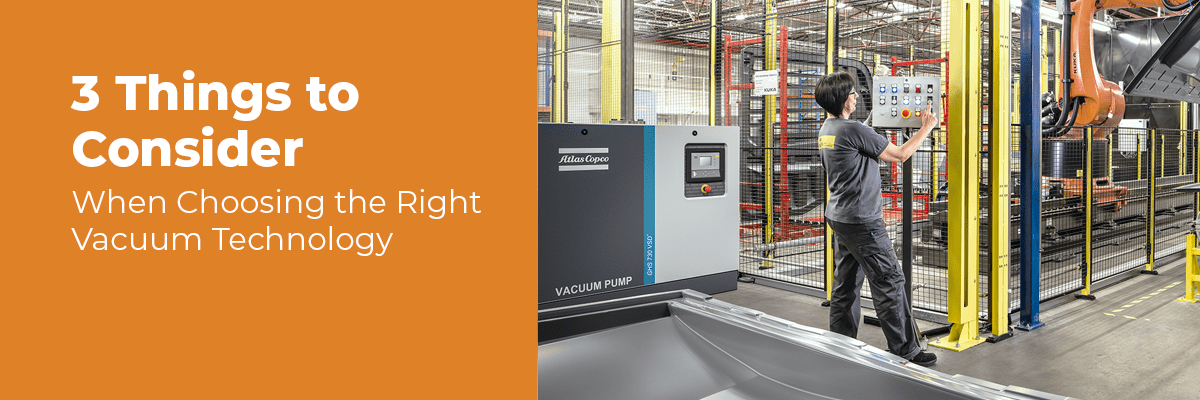
There are three key factors to remember when researching and choosing the proper vacuum pump for your process: how the vacuum pump will impact the application and vice-versa; what the application’s vacuum requirements are; and the complete cost of ownership.
It stands to reason that the type of pump you choose will impact your application, just as your application will impact the pump! For example, if you are selecting a pump for an oil-free application, such as pharmaceuticals or food packaging, then choosing an oil-sealed pump wouldn’t be the right decision.
Pump Impact on Application | Application Impact on Pump |
Pump vibration | Dust/debris from process |
Oil emission (if an oil-sealed pump) | Mechanical movements & vibrations |
Noise, heat, and particle emissions | Gases/other mixtures in process |
Energy consumption |
|
Different applications require different levels of vacuum, and different vacuum pumps pull different pressure levels. With this in mind, knowing which vacuum level is required is vital to selecting the right pump technology. For instance, selecting a liquid ring pump that operates only to 28-29″ of vacuum would not be suitable for a process that requires good gas flow at less than 1 torr. You should also consider whether or not your vacuum pump requires a consistent pressure level to be held, or whether it’s focused more on the pump-down process.
This includes both the initial capital costs of purchasing the vacuum pump, as well as the costs of servicing and maintaining the vacuum pump over its lifetime of use. For example, certain pumps, such as a vane pump, might require more maintenance because of consistent vane replacements – while the maintenance costs on oil-sealed rotary screw pumps could be much lower. Saving energy, reducing the frequency of oil changes, and having maximum pump availability due to non-wearing points are all elements to consider when looking at pump costs.